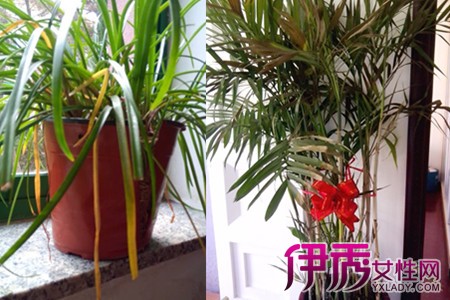Planting techniques of curculigo
Xianmao, also known as Borneo ginseng, is a traditional Chinese medicine in China, which is widely distributed in our country. Mainly concentrated in Jiangxi, Fujian, Sichuan and other southern provinces, Xianmao has the functions of tonifying kidney and yang, tonifying blood and strengthening body. Due to the gradual decrease in the number of wild plants, the artificial planting area of curculigo in China is also gradually expanding, so how to plant curculigo? The following editor brings you the planting technology of curculigo, let's have a look!

1. Land selection and preparation
Curculigo is suitable for planting on flat land, and because it is originally a kind of weed, its growth ability is relatively strong, and its adaptability is also strong. As long as the soil is deep and soft and rich in organic matter, it can grow normally, but it should be noted that it is not suitable to be planted in clay loam and low-lying land. After selecting a good site, do a good job of land preparation, turn it in winter in the first year, and then turn it again in the spring of the following year, with a depth of more than 25 centimeters. Pick up sawdust, weeds and stones in the soil. Sufficient base fertilizer was applied before planting, which was mainly farm manure, and shallow ploughing to make beds after fertilization.
2. Seed selection and planting
Curculigo is mostly suitable for seed planting. First of all, the flowering plant is selected as the mother plant in the middle of September every year, and the soil around the mother plant is planed. Then harvest the fruit, take out the seeds from the fruit, wash the seeds with clean water, remove the pulp from the seed coat, and store them in wet sand. Start raising seedlings in the middle of March every year, dig a good sowing ditch on the seedling bed and sow seeds at the right time to cover the fine soil. After emergence, do a good job in field management, strengthen the work of fertilizer and water, and then control the planting density after 1-2 years, and transplant in time.
3. Field management
In the year of planting, proper intermediate ploughing and weeding should be carried out after the seedlings return to green, and then shallow and middle ploughing should be carried out every three months. When weeding, try to use artificial weeding to prevent herbicides from harming the seedlings. Topdressing should not be less than three times a year, and the first two times should be carried out together with intermediate ploughing and weeding. Fertilizers are mainly farm manure, and soil should be properly cultivated after topdressing to improve soil fertility and prevent plant lodging. In the early stage of planting, intercropping can be appropriate, and the intercropping plants are mainly leguminous plants such as soybeans and mung beans, which can shade curcuma, promote growth and increase planting efficiency.
4. Pest control
The growth period of curculigo is relatively long, so we should pay attention to the prevention and control of diseases and insect pests in the planting process. The common diseases and insect pests of curculigo are black spot, aphids and so on. the threat of diseases and insect pests to curcuma is very great. If the management work is done well, it may lead to die before growing up. Therefore, when planting, we should pay attention to regular disinfection, observe the countryside, and strengthen field management. If abnormal conditions are found, corresponding measures should be taken in time to prevent the disease from spreading, affect the growth of curculigo and reduce the planting efficiency.
The above is a brief introduction to the planting technology of curculigo, the planting of curculigo requires a certain degree of patience. And it is necessary to master certain management techniques in order to ensure the normal growth of curculigo, improve yield, enhance quality, and expand their own planting benefits. That's all for today's introduction. This article is for reference only. Thank you for your reading and support.
- Prev

What is the reason why the leaves of potted plants turn yellow? reveal the mystery behind the bright leaves?
Potted plant species in a fixed container, growth and development is limited, if poor management, it is easy to appear leaf yellowing phenomenon, then what causes leaf yellowing? Can it be saved? Today I'm going to answer these two questions for you.
- Next

Planting techniques of cassia twig
Planting techniques of cassia twig
Related
- Fuxing push coffee new agricultural production and marketing class: lack of small-scale processing plants
- Jujube rice field leisure farm deep ploughing Yilan for five years to create a space for organic food and play
- Nongyu Farm-A trial of organic papaya for brave women with advanced technology
- Four points for attention in the prevention and control of diseases and insect pests of edible fungi
- How to add nutrient solution to Edible Fungi
- Is there any good way to control edible fungus mites?
- Open Inoculation Technology of Edible Fungi
- Is there any clever way to use fertilizer for edible fungus in winter?
- What agents are used to kill the pathogens of edible fungi in the mushroom shed?
- Rapid drying of Edible Fungi

